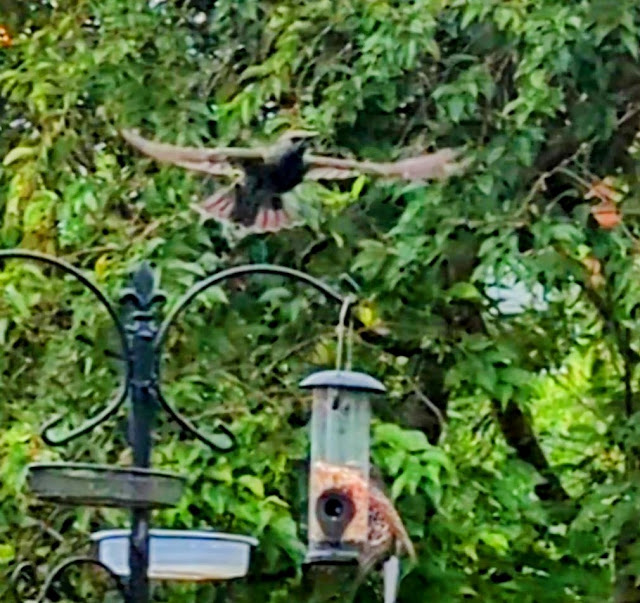The current UK storm season (September 2023 to August 2024) seems to have been busier than usual with Storm Isha (21-22 January 2024) and Storm Jocelyn (23-24 January 2024) the two most recent examples. From the Met Office warnings, Isha seemed the most threatening of the two storms from Herefordshire's point of view. In reality, we experienced significantly higher wind speeds during Storm Jocelyn, albeit for shorter sustained periods (Figure 1).
 |
| Figure 1: Wind Speeds (Average/Maximum) in Hereford (18 - 25 January 2024) |
My Davis weather station recorded maximum wind speeds up to 45 km/h during Storm Isha compared with 64 km/h during Storm Jocelyn. In old-fashioned money that would be 28 mph and 40 mph. The highest wind speed observed in our back garden was 66 km/h (41 mph) during Storm Franklin in February 2022. Those winds brought down a shared fence with our neighbour (actually during Storm Eunice, a few days before Franklin); Storm Jocelyn has repeated that feat (Photo 1).
 |
| Photo 1: Wind-affected Fence |
Otherwise, the only other obvious damage was a toppled olive bush ...
 |
| Photo 2: Toppled Olive Bush |
Davis weather stations located on the Welsh Coast (Barmouth) and in Snowdonia (Cwm Penmachno) recorded maximum wind speeds of 103 km/h and 124 km/h respectively, both during Storm Isha. In old-fashioned money that would be 64 mph and 77 mph.
Finally, back to that 'feeling' I had that the current storm season (Sept 1st 2023 to August 31st 2024) was somewhat busier than normal with 10 named storms so far. Figure 2 illustrates the relative 'storminess' of each storm season based on the number of named storms. Data are from here. The Met Office only started naming storms in 2015.
 |
| Figure 2: Number of Named UK Storms in Each Storm Season |
It seems my '
feeling' was justified because the current storm season is indeed the stormiest of the last 6 years. And who remembers weather events more than 6 years ago unless they were exceptional like the
1987 Great Storm. Of course, that doesn't mean this season is the stormiest ever -
Figure 1 shows the 2015/16 season had 11 named storms (although 5 of them occurred on, or after, the 29t
h January). Nevertheless, the current storm season (2023/24) may still turn out to be the stormiest in recent memory since it has another 7 months to run.
Re-plotting the storm data without the current season's values (Figure 3) suggests a recent trend of decreasing storminess that the current season has bucked. This may, however, be an artefact of too short a time series.
.JPG)
.JPG)



.png)


































